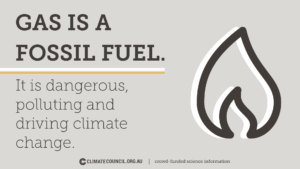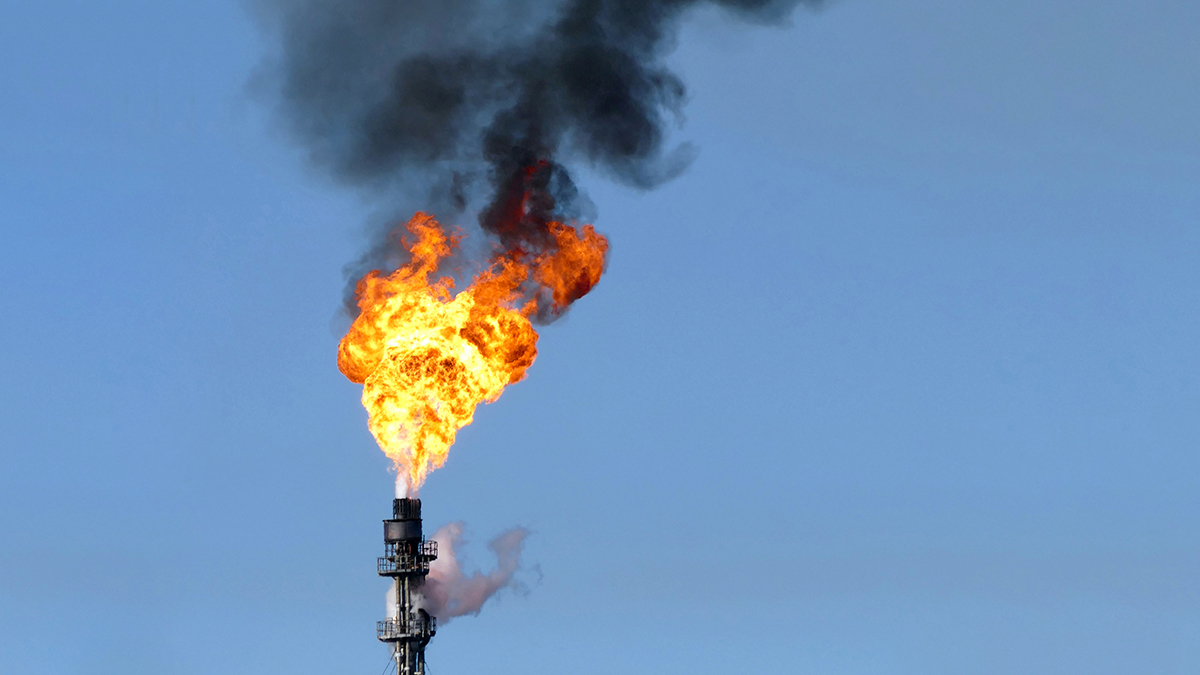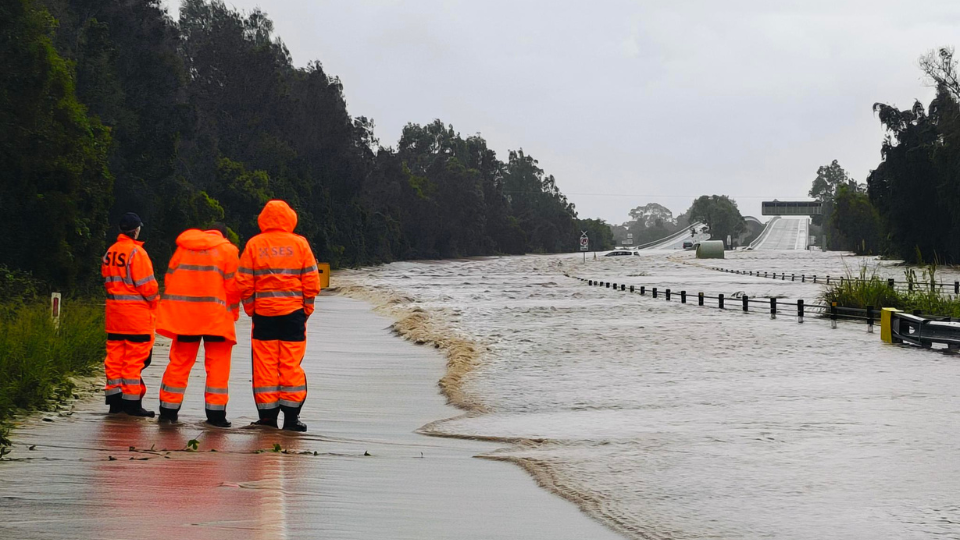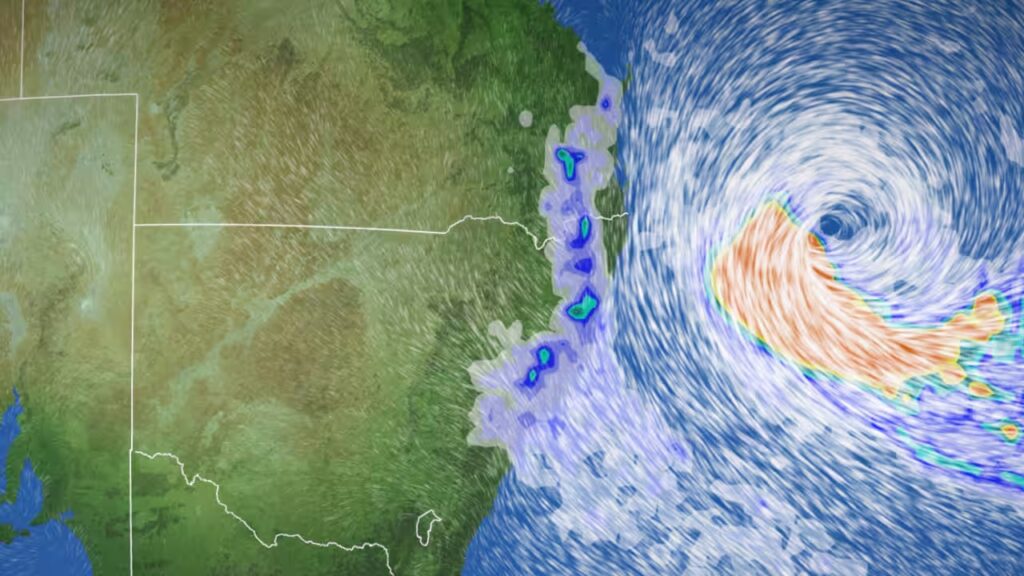So, you’ve got questions about gas. Here are the top things to know (but keep reading for more detail):
- Gas is a fossil fuel and a greenhouse gas. That means burning and producing gas drives climate change.
- Emissions from the extraction, processing and export of gas have been the main driver behind Australia’s official emissions staying so high. The official figures for emissions from gas are likely significantly underestimated.
- Investing in new gas is unlikely to pay off in the future, so it’s a waste of stimulus spending.
- More investment in gas risks locking in huge investment losses and environmental harm, with gas projects failing to provide any benefit at all.
- Shifting Australia toward a zero emissions future provides long-term employment opportunities that the gas industry cannot.
- Renewable energy backed by storage is the lowest cost form of new electricity generation and keeps dropping in price each year.

What is gas?
Gas is a fossil fuel, mostly made up of methane. Methane is the second-most important greenhouse gas after carbon dioxide and a key driver of climate change. Using gas for energy creates greenhouse gas pollution, driving climate change in three ways:
- Burning gas for energy produces carbon dioxide, the most significant greenhouse gas. Some Australian gas power stations are dirtier than coal even before considering other impacts.
- Even before it is burned to create energy, gas production processes release vast quantities of carbon dioxide and methane at every stage of its supply chain. In the short-term, one tonne of methane warms the atmosphere 86 times as much as one tonne of carbon dioxide. This means that the overall climate impact of gas is far higher than is often claimed.
- Liquefying gas, a necessary step in preparing gas for export, is extremely energy-intensive. This energy is most often provided by the consumption of fossil fuels, increasing the amount of greenhouse gases in the supply chain even more.
The term, ‘fugitive emissions’ is used to describe those emissions from gas that occur before it is used productively. This is a huge source of emissions during gas production. These are emissions of greenhouse gas that occur during the extraction, processing and transport of gas (they’re called fugitive emissions because they don’t come directly from burning gas).
Fugitive emissions in Australia have risen 46% since 2005. There are four different types of fugitive emission:
- Venting occurs when gas is directly released to the atmosphere. This means methane, which is the major chemical component in gas, goes straight into the atmosphere and warms the climate.
- Flaring burns gas to reduce workplace hazards and other risks. Burning methane means that carbon dioxide is sent to the atmosphere instead of methane. Flaring reduces the climate impact of gas production, but is done in vast quantities and sees millions of tonnes of carbon dioxide released each year..
- Leaks occur from faulty equipment, such as loose or cracked pipes. Leaks are very poorly monitored in Australia. The official Federal Government data assumes that leaky pipes release no gas in Australia, and never have. This is very obviously untrue, but because the monitoring is poor, it is difficult to say how much additional greenhouse gas is added to the atmosphere in any given year. Can we say anymore here?
- Migratory emissions are very poorly understood. Migratory emissions occur when gas operations cause methane or other greenhouse gases to be released through natural fissures in the earth, far from the wellhead.
The reliance on company-compiled data relating to the rates of venting and flaring, along with the failure to appropriately measure leaks and migratory emissions, mean that fugitive emissions from gas are routinely underestimated. New tracking technology that measures gas emissions globally shows that gas production releases far more dangerous greenhouse gas emissions than officially measured. This matches what is seen in the atmosphere, with methane levels being far higher than what is officially counted.
When fugitive emissions are considered alongside the immense quantities of fossil fuel-based energy used by the gas industry to liquefy gas for export, the reality is that gas is often no better for the climate than coal.
Why is everyone suddenly talking about gas?
You may have heard gas being talked about a lot recently. That’s because the Federal Government has promoted the idea of a ‘gas-led recovery’ to lead us out of the economic downturn.
But experts and analysts say the high cost of producing Australian gas, combined with a global drop in oil and gas prices, means gas just doesn’t make sense as an option for economic stimulus. When you add in the fact that gas is fueling climate change, it means it’s a recovery option the Australian economy and the climate can’t afford.
How does gas compare to renewable energy?
After 30 years of inaction on climate change from successive Australian governments, there is no room to develop further fossil fuel infrastructure. The rapid development of battery storage technology (the price of batteries has fallen by an average of 20% per year) makes renewables backed by batteries a cheaper, cleaner option than developing more gas-fired generators as we shift from coal-fired power.
Australia is the sunniest and windiest inhabited continent on the planet. Australia has everything it needs to make deep, enduring and immediate cuts to greenhouse gas emissions. By refusing to step up to the immense opportunities a zero-carbon economy offers, Australia is being left behind by countries with fewer renewable resources.
Do we need new gas?
Nope. New gas is an unnecessary and dangerous step in Australia’s efforts to tackle climate change.
How does gas affect energy prices?
Australian gas pushes up power prices. We are the largest exporter of LNG, but we’re paying some of the highest prices for gas in the world. Seems strange, right? But, around 70% of the gas extracted in Australia is exported, and the other 30% is split across homes, manufacturing and electricity generation.
And in fact, domestic gas has tripled in price since the opening up of Queensland coal seam gas fields for export. The cost of gas is the reason electricity prices have been running so high since at least 2016. In contrast, renewable energy, even when backed by storage, is the lowest cost form of new electricity generation and keeps dropping in price each year.
The Federal Government often claims that ‘supply’ is the issue around high domestic gas prices and uses this reason to lobby for establishment of new gas fields and exploration licenses, while failing to regulate the gas export market. Australia’s supply of gas has dramatically increased over the past several years, and so have power prices for Australian consumers. If supply was the answer, this problem would have been solved already.
Gas extraction is dangerous
The gas industry uses the terms ‘conventional’ or ‘unconventional’ to describe gas reservoirs.
Conventional gas is trapped in naturally porous reservoir formations that are capped with rock. When a well is drilled, gas flows to the surface without the need to pump.
Unconventional gas is found in more complex geological formations which limit the ability of gas to be extracted. The term ‘unconventional’ means that extra steps must be taken to extract the gas from underground. This includes fracking, but covers others measures as well, and so not all unconventional gas requires fracking. Three types of unconventional gas are extracted in Australia: coal seam gas, shale gas and tight gas.
What is fracking?
Fracking is one of the most environmentally damaging ways to extract fossil fuels. It involves forcing massive quantities of sand-bearing water, loaded with chemicals, deep underground. The pressure behind the fluid mix creates new cracks in the rock, which allow the gas to flow more freely to the well.
Fracking uses many dangerous chemicals. These can contaminate local land and water supplies. The identities of the specific chemicals used in a fracking operation are usually kept secret from the communities they affect, and, if something goes wrong, can cause catastrophic damage to local agriculture, bushland and waterways. Potential health problems caused by fracking chemicals include cancer, nervous system damage and respiratory problems. Fracking is a catastrophic risk.










